
Posts Tagged: foxgloves
European Wool Carder Bees Are on the Move
Seen any European wool carder bees lately? European wool carder bees (so named because the female collects or cards plant hairs for their nests) are on the move. The bees, about the size of honey bees, are mostly black and yellow. The females range in body length from 11 to 13 millimeters,...
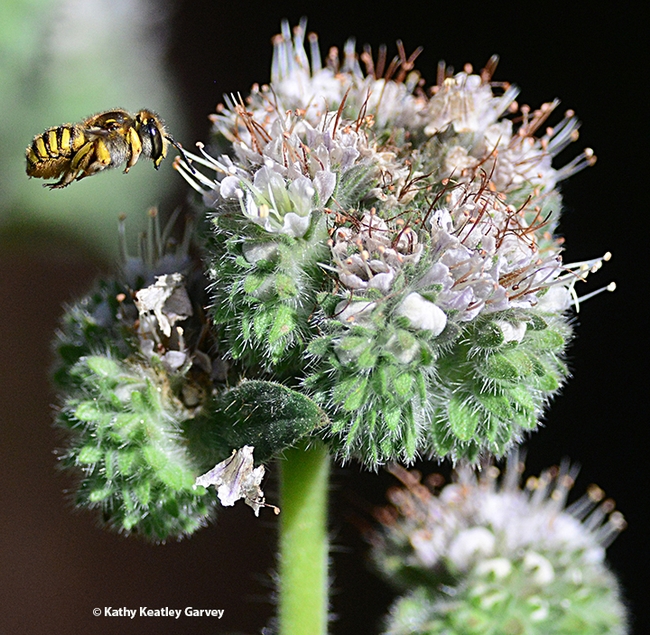
A European wool carder bee in flight. (Photo by Kathy Keatley Garvey)
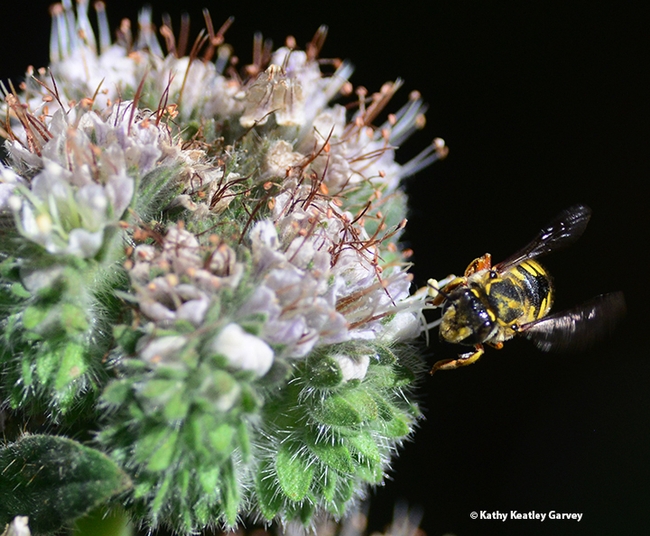
European wool carder bees are difficult to photograph when they're zipping around. (Photo by Kathy Keatley Garvey)
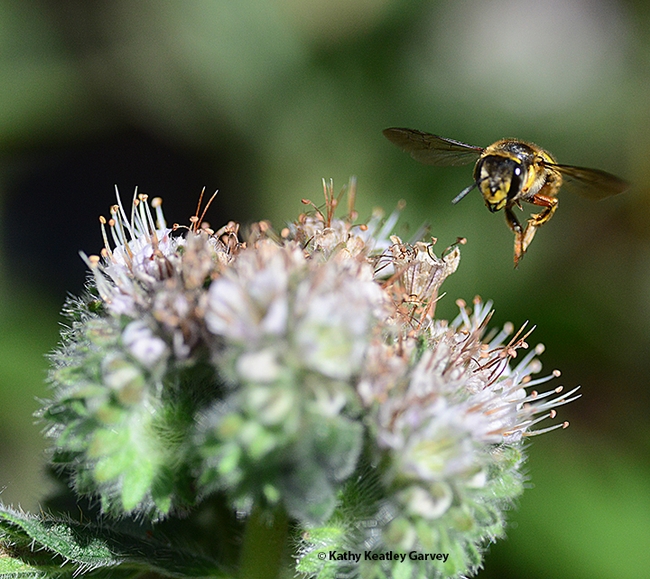
Make way! This European wool carder lets everyone know who's boss. (Photo by Kathy Keatley Garvey)
How a 'Bear' Can Outsmart a Fox
There's a way for a bear to outsmart a fox. A teddy bear bee, that is. We just witnessed a male Valley carpenter bee, Xylocopa sonorina, aka "the teddy bear bee," buzz up to a patch of foxgloves, Digitalis purpurea. Then he engaged in the foraging behavior...
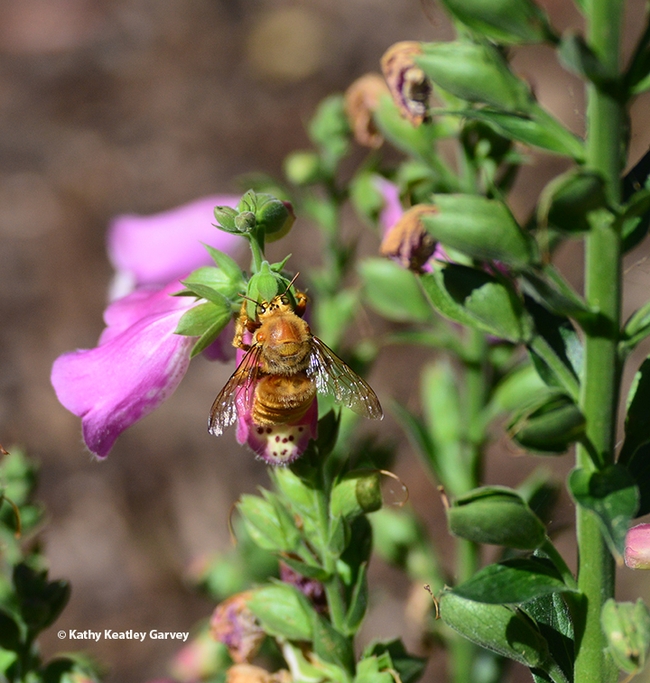
A male valley carpenter bee, Xylocopa sonorina, engaging in nectar robbing; he's sipping nectar through a hole in the base of a foxglove blossom. (Photo by Kathy Keatley Garvey)
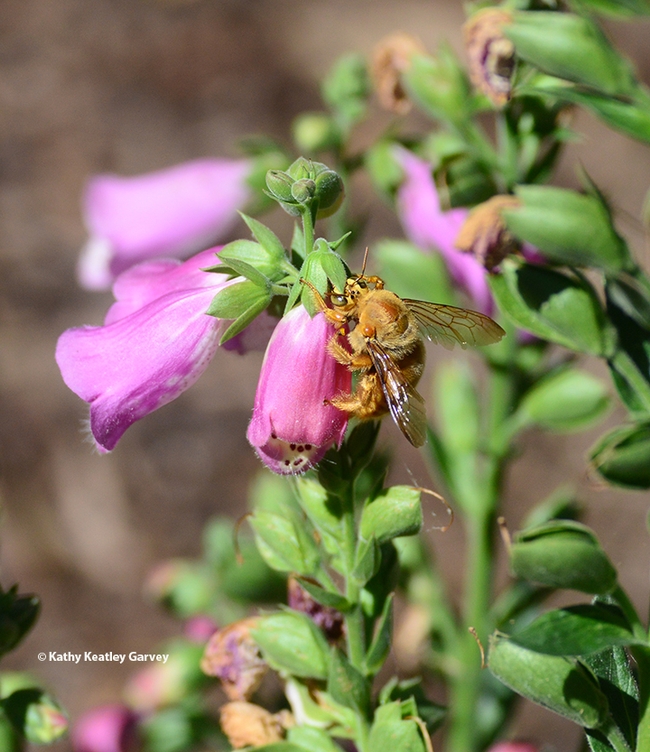
Ah, sweet nectar. This male Valley carpenter bee lingers a bit to sip the sweet reward. (Photo by Kathy Keatley Garvey)
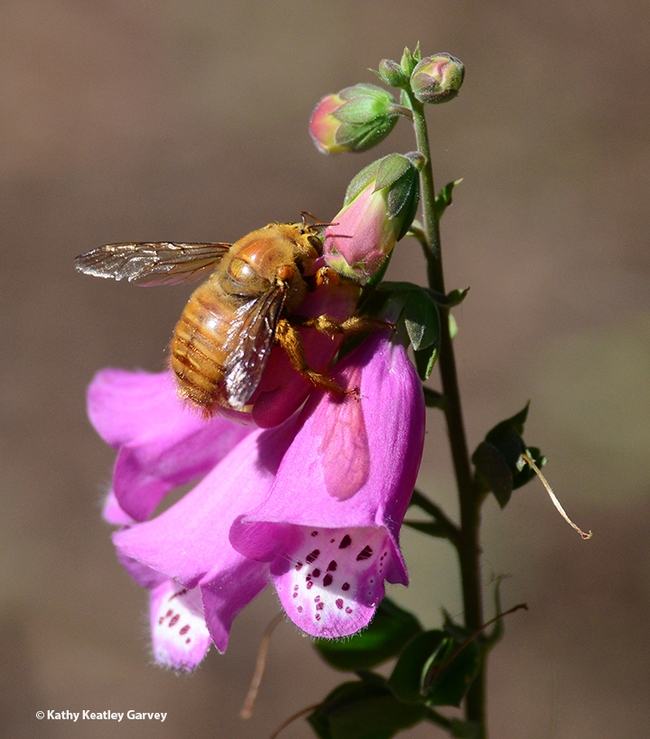
Close-up of male Valley carpenter bee, "the teddy bear beer," engaged in nectar robbing. (Photo by Kathy Keatley Garvey)
In Praise of Bumble Bees
When was the last time you sighted a bumble bee? Photographed it? It's National Pollinator Week and one of our favorite bumble bees is the yellow-faced bumble bee, Bombus vosnesenskii. It was also a favorite of internationally renowned bee expert Robbin Thorp, distinguished emeritus professor of...
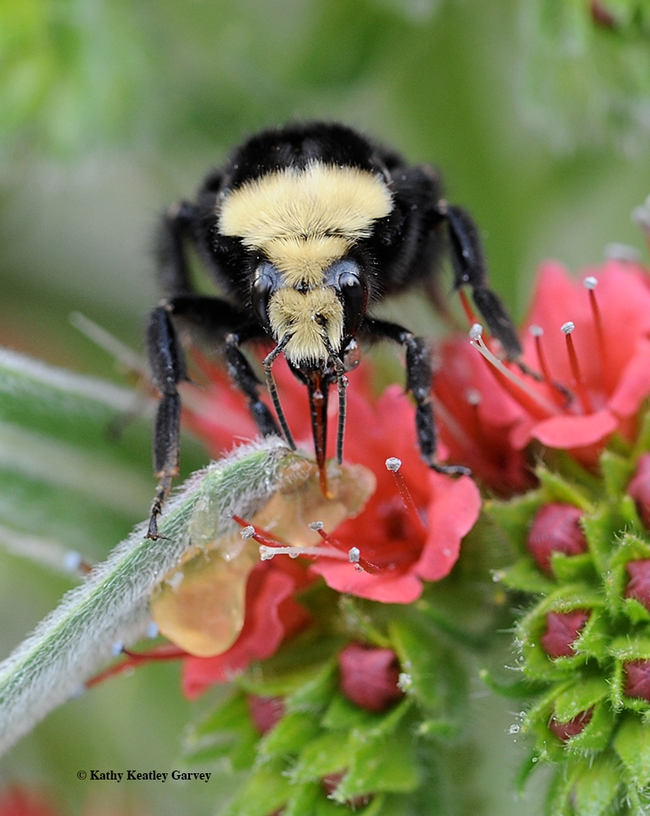
A yellow-faced bumble bee,Bombus vosnesenskii, foraging on a tower of jewels, Echium wildpretii, in Vacaville, Calif. (Photo by Kathy Keatley Garvey)
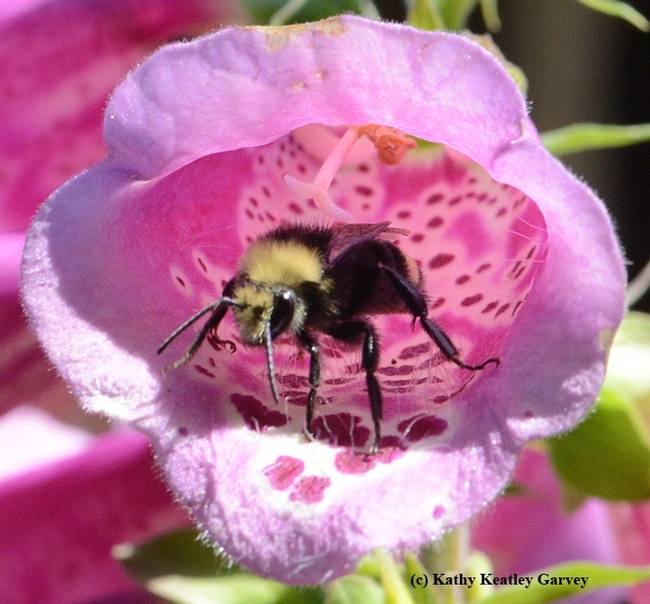
A yellow-faced bumble bee, Bombus vosnesenskii, leaving a foxglove in Vacaville, Calif. (Photo by Kathy Keatley Garvey)
Under Attack: European Wool Carder Bee Vs. Male Valley Carpenter Bee
Meet the competitors. In this corner, meet Mr. Teddy Bear. He's a blond, green-eyed carpenter bee, Xylocopa varipuncta, a native, and one of three species of carpenter bees commonly found from northern to southern California to western New Mexico. In the other corner, meet Mr. Bodyslam....
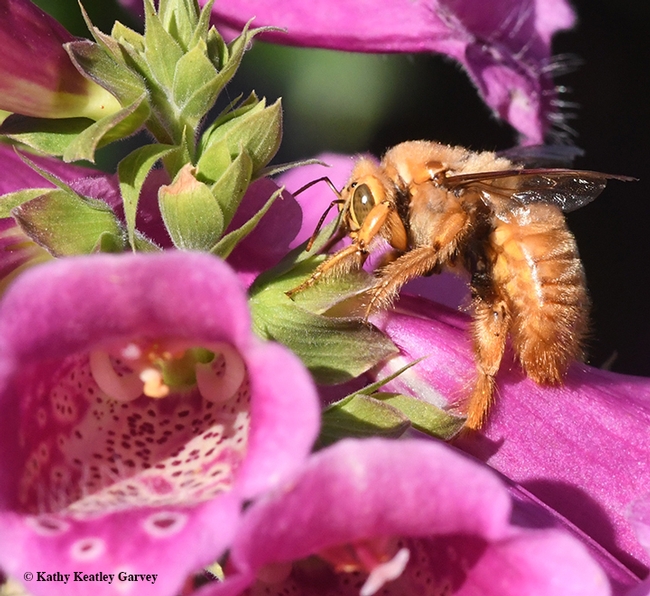
Meet Mr. Teddy Bear, a green-eyed blond trying to nourish himself on foxglove nectar. (Photo by Kathy Keatley Garvey)
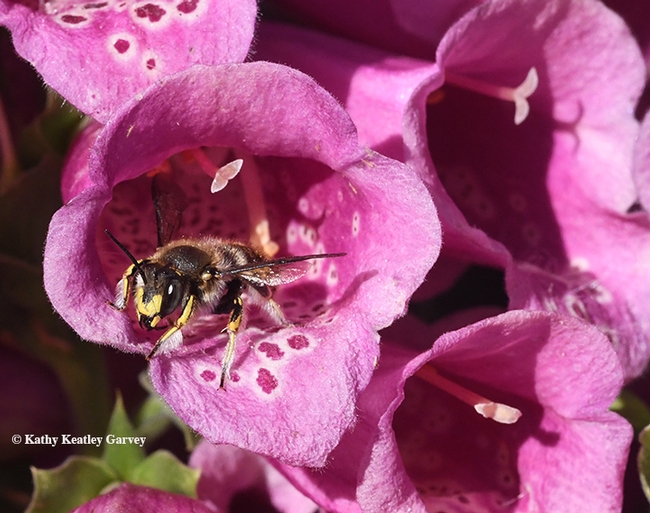
Meet Mr. Bodyslam, a very territorial European wool carder bee. He patrols the foxgloves. (Photo by Kathy Keatley Garvey)
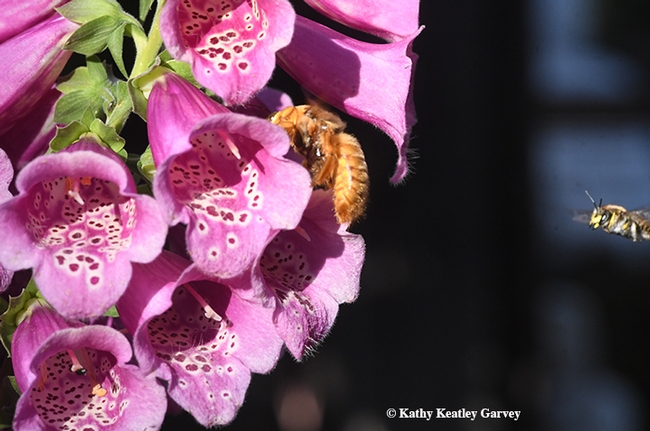
Mr. Bodyslam targets the unsuspecting Mr. Teddy Bear. "Hey, get away from my flowers and nobody gets hurt." (Photo by Kathy Keatley Garvey)
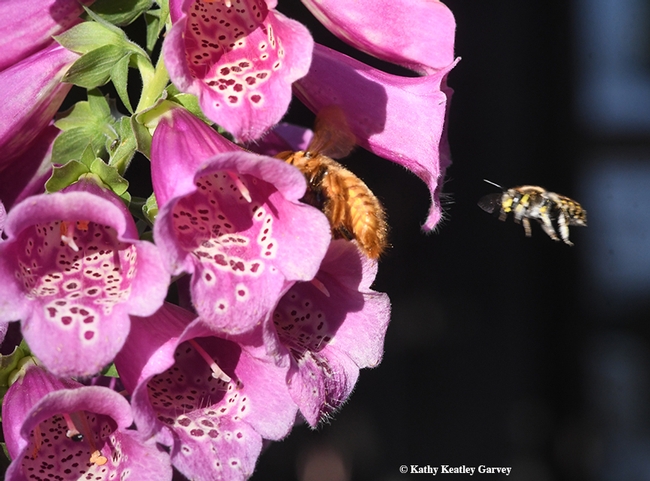
Mr. Bodyslam is moving so fast, he's a blur. (Photo by Kathy Keatley Garvey)
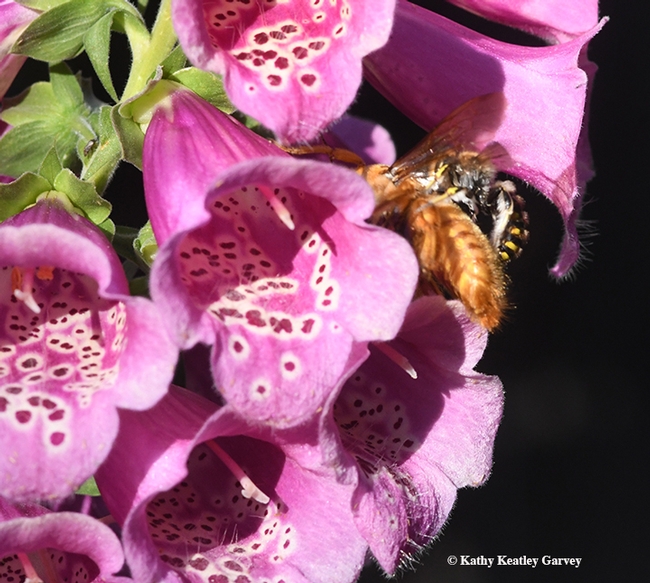
And the battle begins! Mr. Bodyslam attacks Mr. Teddy Bear. "Hey, can't a fellow get a bite to eat in peace?" (Photo by Kathy Keatley Garvey)
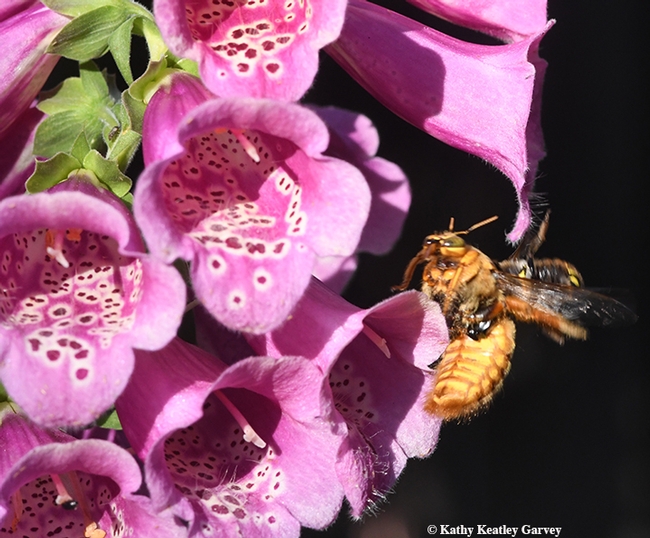
Gotcha! The attack turns vicious. Mr. Bodyslam slams into Mr. Teddy Bear, a blow that prompted Mr. Teddy Bear to depart (only to return). (Photo by Kathy Keatley Garvey)
Robbing the Nectar
It's the easy way to do it. A carpenter bee heads for a foxglove blossom and drills a hole in the corolla to sip the nectar. This is "nectar robbing"--bypassing the pollination process and heading straight for the reward, the nectar. Honey bees are quick learners. Soon they're sipping nectar from...
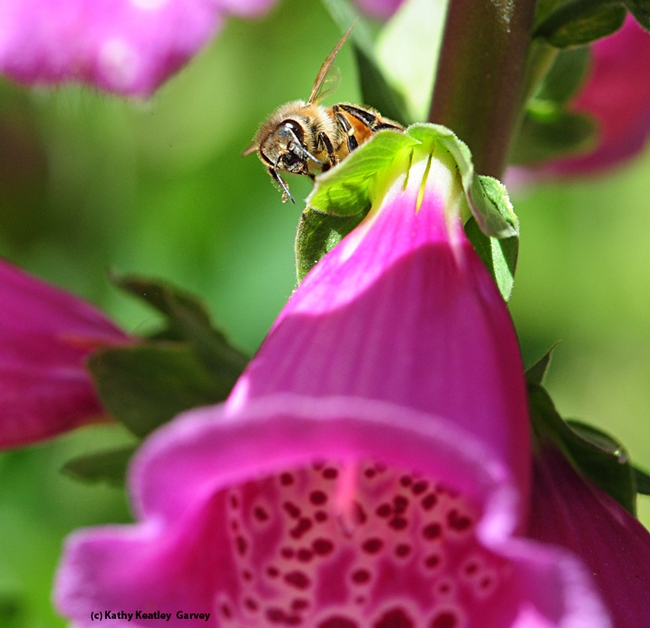
A honey bee looking for a hole drilled by a carpenter bee in the corolla of a foxglove. (Photo by Kathy Keatley Garvey)
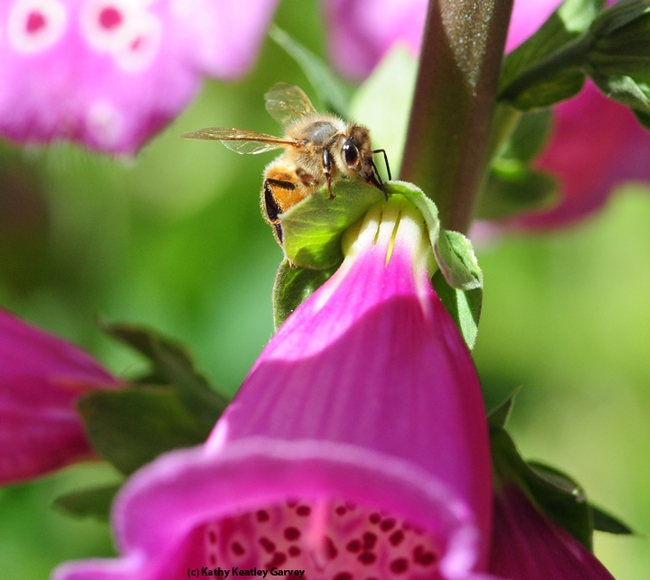
Still searching--the honey bee is getting closer to finding the hole pierced by a carpenter bee.(Photo by Kathy Keatley Garvey)
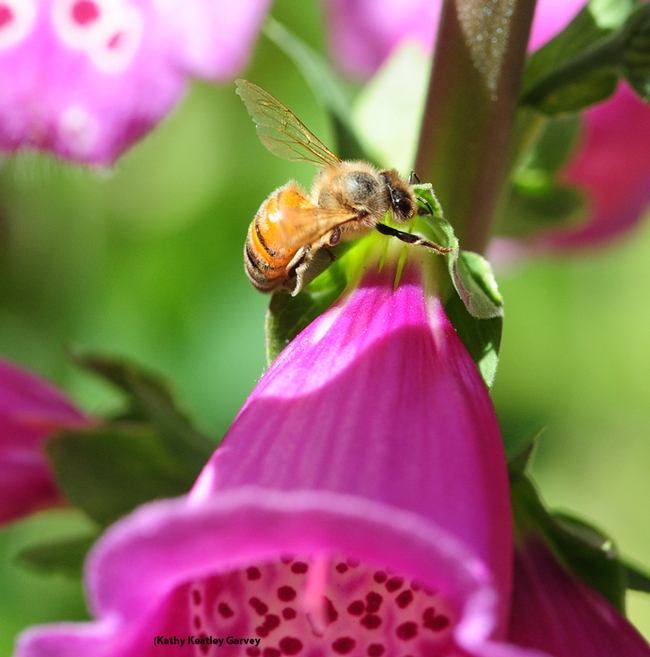
Found it! Ah, sweet nectar! (Photo by Kathy Keatley Garvey)
